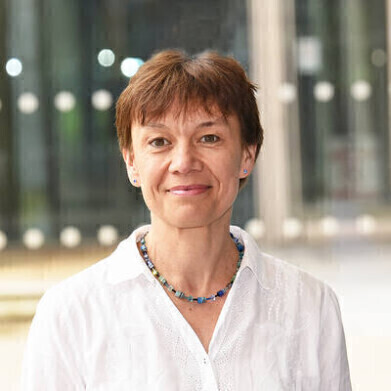-

-
 Dr Kersten Meyer (Image Credit: The Welcome Sanger Institute)
Dr Kersten Meyer (Image Credit: The Welcome Sanger Institute) -

News & Views
Human Lung Cell Atlas reveals Cell Type Diversity
Jun 21 2023
Recent single-cell technologies have given researchers an insight into which genes are active in each cell in a particular organ. However this method is both time-consuming and expensive and generally, only include a limited amount of people in each study. Now researchers from the Wellcome Sanger Institute, Helmholtz Munich, University Medical Center Groningen and collaborators have created an integrated single-cell atlas of the human lung by combining 49 different published and newly generated datasets. Using AI-based techniques, this comprehensive cell map provided insights into cellular differences between healthy people, as well as rare cell types.
Prof Fabian Theis, Head of the Computational Health Center, Director of the Institute of Computational Biology at Helmholtz Munich and Professor at the Technical University of Munich (TUM), explains the project: “We have created a first integrated reference atlas of the human lung, which includes data from more than a hundred healthy people and reveals how the cells from individuals vary with age, sex, and smoking history. The sheer numbers of cells and individuals involved now gives us the power to see rare cell types and identify new cell states that have not previously been described.”
Dr Malte Lücken, Group leader at the Institute of Computational Biology and the Institute of Lung Health & Immunity at Helmholtz Munich added: “A comprehensive organ atlas requires many datasets to capture the diversity between both cells and individuals, but combining different datasets is a huge challenge. We developed a benchmarking pipeline to find the optimal method to integrate all datasets into the atlas, using artificial intelligence, and combined knowledge and data from almost 40 previous lung studies.”
“Obtaining a refined lung atlas helps us understand the cellular landscape of our respiratory system and will enable us to better understand how diseases, such as COVID-19 or asthma, occur and how we might prevent them,” said Dr Kerstin Meyer, Principal Staff Scientist in the Cellular Genetics team at the Wellcome Sanger Institute. “What makes our study so important is the vast amount of data analysed, with information from over 400 individuals, and over 40 datasets, many of which have been developed at the Wellcome Sanger Institute.”
The team discovered that different lung diseases shared common immune cell states, including the finding that a subset of macrophages (a type of immune cell) shared similar gene activity in lung fibrosis, cancer and COVID-19. The shared states indicate that these cells could play a similar role in scar formation in the lung in all three diseases, and provide pointers for potential therapeutic targets.
Prof Martijn Nawijn, a senior author on the paper and Professor at the University Medical Center Groningen, the Netherlands, said: “This is the first effort to compare healthy and diseased lungs in one study in an integrated way. Our study not only supports the presence of lung fibrosis in COVID-19, it allows us to identify and define a shared cell state between lung fibrosis, COVID-19 and lung cancer patients. Finding these shared disease-associated cells is really exciting, and reveals a totally different way of looking at lung diseases, opening possibilities for novel treatment targets and developing treatment response biomarkers. Our findings also suggest that therapies working for one disease may help alleviate others.”
The Lung Atlas Integration project was a large collaborative effort with nearly 100 partners from more than 60 departments involved internationally, including key researchers from the University Medical Center Groningen and Northwestern University. The team is part of the Human Cell Atlas (HCA) Lung Biological Network, which has its roots in the Chan Zuckerberg Initiative Seed Networks for the HCA, and the European Union funded lung network DiscovAIR. At the start of the pandemic in 2020, the single-cell lung communities came together rapidly, forming the HCA Lung Biological Network to help understand COVID-19, which then catalyzed the effort to integrate all the data.
The atlas has been made fully publicly available and it is expected to serve as a central resource for doctors and scientists that want to better understand lung biology in health and disease and develop further studies.
An integrated cell atlas of the lung in health and disease. Lisa Sikkema et al. (2023). Nature Medicine. DOI: 10.1038/s41591-023-02327-2
More information online
and online
Digital Edition
ILM 49.5 July
July 2024
Chromatography Articles - Understanding PFAS: Analysis and Implications Mass Spectrometry & Spectroscopy Articles - MS detection of Alzheimer’s blood-based biomarkers LIMS - Essent...
View all digital editions
Events
Jul 28 2024 San Diego, CA USA
Jul 30 2024 Jakarta, Indonesia
Jul 31 2024 Chengdu, China
ACS National Meeting - Fall 2024
Aug 18 2024 Denver, CO, USA
Aug 25 2024 Copenhagen, Denmark

.jpg)

24_06.jpg)













